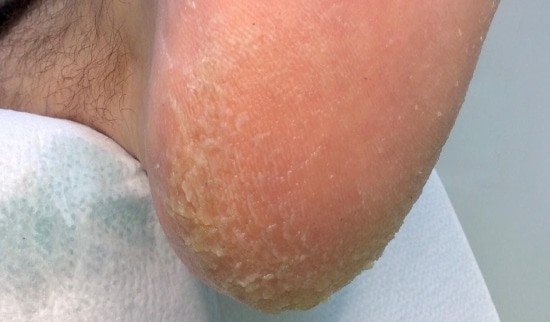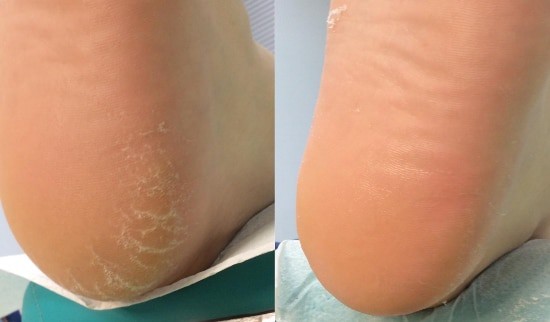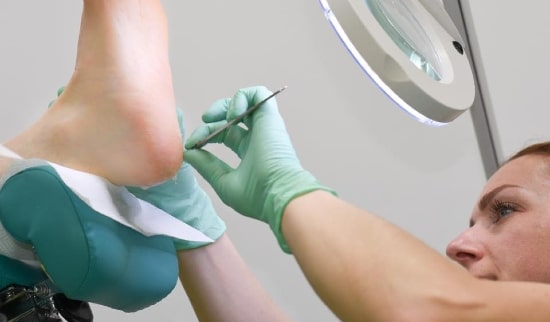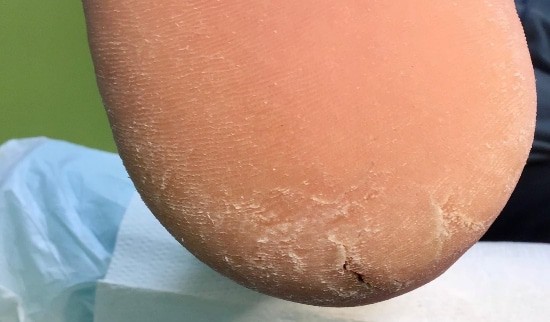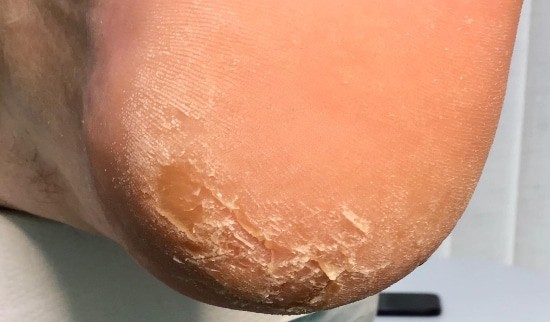Cracked heels treatmentsCracked heels or heel fissures
Cracked heels or heel fissures occur mainly due to excess hard skin (hypercaratosis on the heel). Cracked heels are cleaned and hard skin is removed, and it is cared for or protected so that the cracked heels heal. If you do not heal the entrance wound, it can be very dangerous for bacteria and viruses.
Types of
cracked heels
Cracked heels can be small, large, shallow, deep, uncomfortable, bleeding, they can fester, become inflamed, the heel does not look nice, they can also become inflamed.
What can cause
cracked heels?
Skin that ruptures deeply, begins to bleed, or even becomes inflamed or festering, results in minor or severe pain and difficulty walking.

Copyright Center Pedimed
Copyright Center Pedimed

